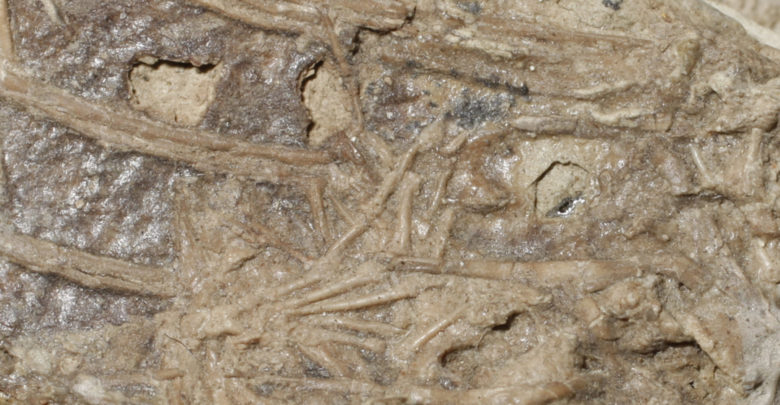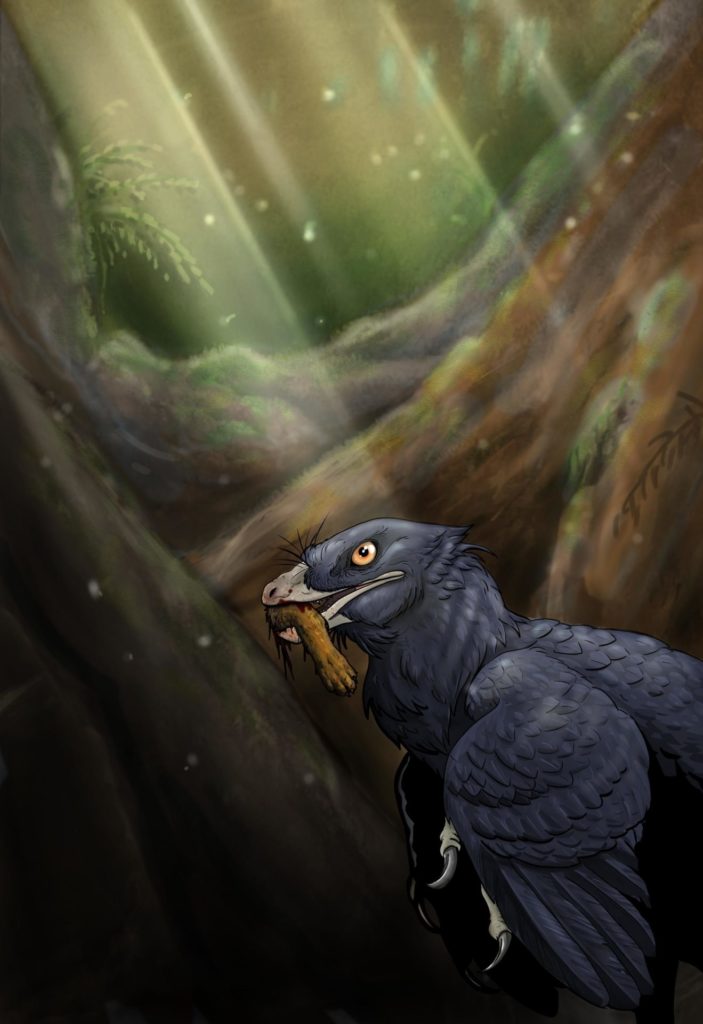 Hans Larsson
Hans LarssonAn international team of researchers have found evidence of a dinosaur eating a mammal, which has only ever been found once before. The project was recently published as a paper in the Journal of Vertebrate Paleontology.
A preserved foot of a small mammal was found within the ribcage of a fossilized Microraptor zhaoianus, a small, feathered, carnivorous dinosaur from the Early Cretaceous period. The fossil was found within western Liaoning in northeast China, in what used to be Jurassic and Cretaceous lake deposits.
According to Corwin Sullivan, an associate professor in the department of biological sciences at the University of Alberta and co-author of the paper, this type of finding is very rare.
“You need a fairly intact skeleton, and then that needs to be a skeleton of an individual that ate something shortly before it died,” Sullivan said. “And then the thing it ate has to have hard parts so that it can be preserved in the fossil record, as very soft plant material or just flesh is going to decay.”
The fossil of the Microraptor zhaoianus shows that it ingested the mammal’s foot, and by comparing the fossil to other microraptor specimens, their diet becomes clearer.

“There are specimens of microraptor with other kinds of gut contents; there’s one that’s eaten a bird, one that’s eaten the lizard, and one that’s eaten a fish. And now we have one that’s eaten a mammal,” Sullivan said.
This shows that microraptors had a generalist diet with a wide feeding niche; whether they were scavengers or hunters, they ate anything they came across.
“It’s interesting that this type of carnivore existed in the geological past, and that some small dinosaurs were generalists that were happy to eat probably anything they came across,” Sullivan said. “That’s not necessarily surprising, but it’s worthwhile having actual fossil evidence that shows that was the case.”
According to Sullivan, this is the second known discovery of a dinosaur ingesting a mammal — the first case also being found within western Liaoning from the Early Cretaceous period. It was a fossilized Sinosauropteryx, with mammalian bits in its ribcage.
“They’re quite different kinds of carnivorous dinosaur,” Sullivan said. “I suppose that tells us that in the Early Cretaceous, there was a diversity of small theropods preying on mammals. Again, not surprising but interesting to actually know.”
Finding information about dinosaurs and what their diets consisted of helps researchers learn more about the Earth in those time periods.
“Knowing what an animal ate is fairly fundamental to figuring out other things about its lifestyle and its physiology — its relationships to other things that inhabited the same ecological community,” Sullivan said.
Knowing the gut contents of one animal is only one data point — “a picture of the geological past gets much richer” as more data points are accumulated, he said.
“If we have information like that about many species, then we start to build up more comprehensive pictures of Cretaceous ecosystems and how things in those ecosystems were interacting.”



